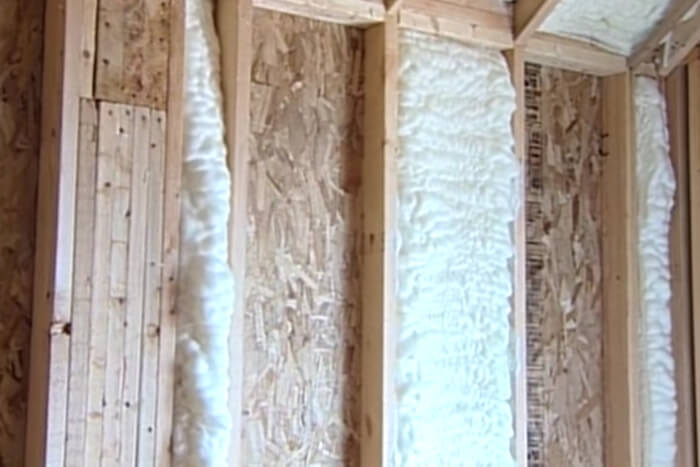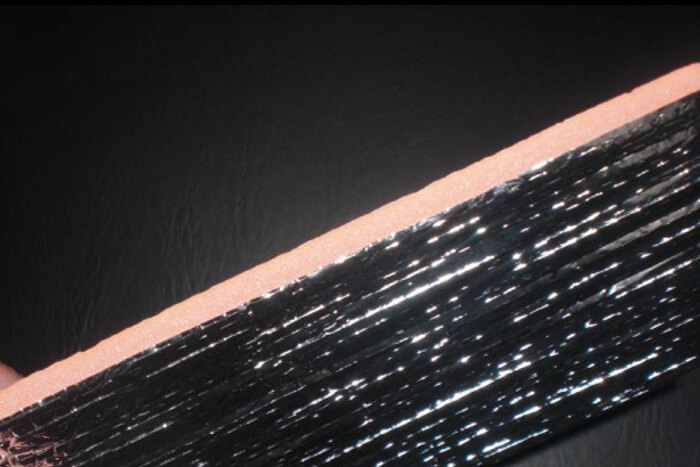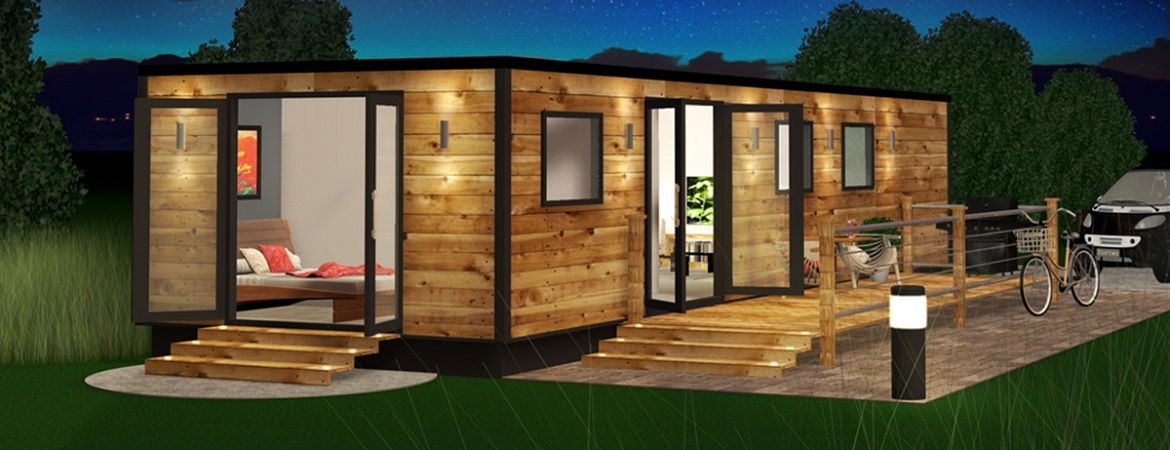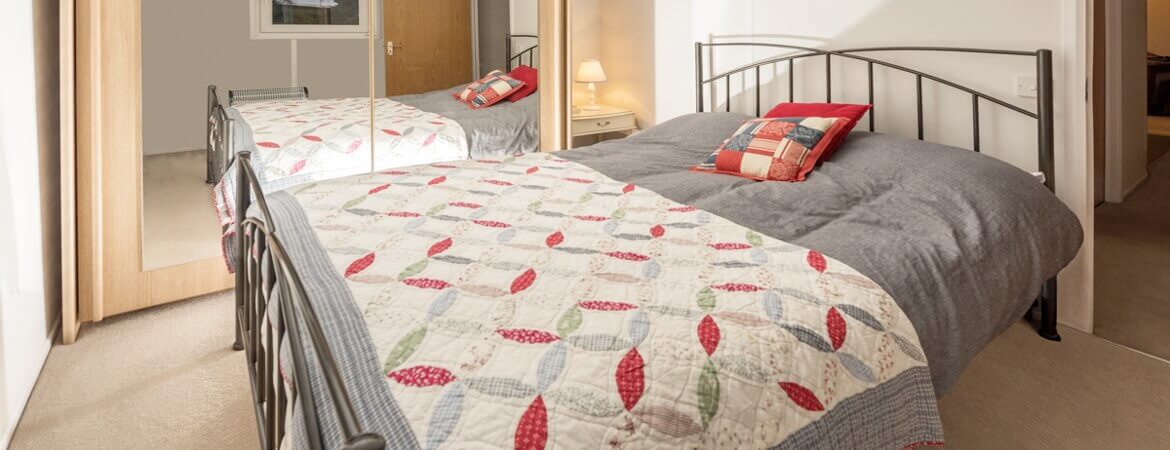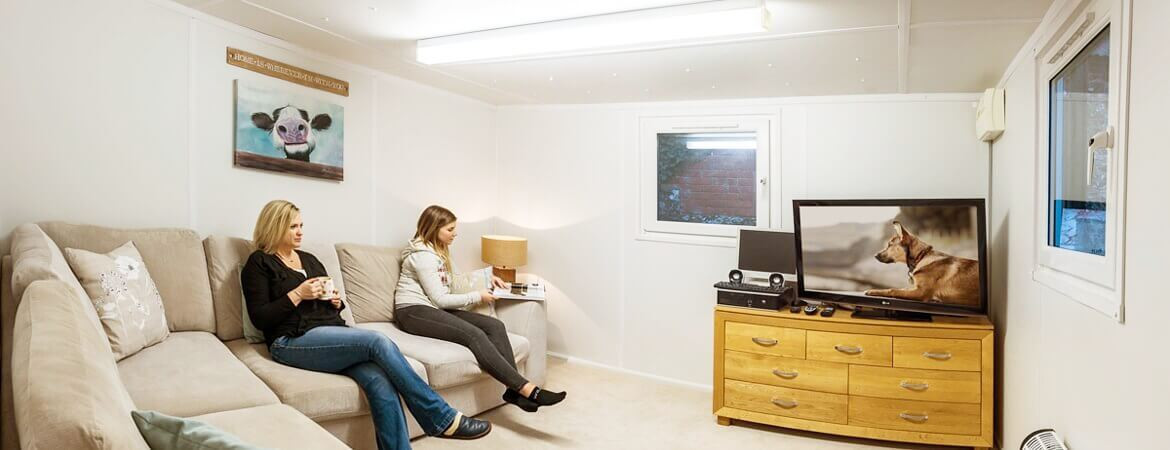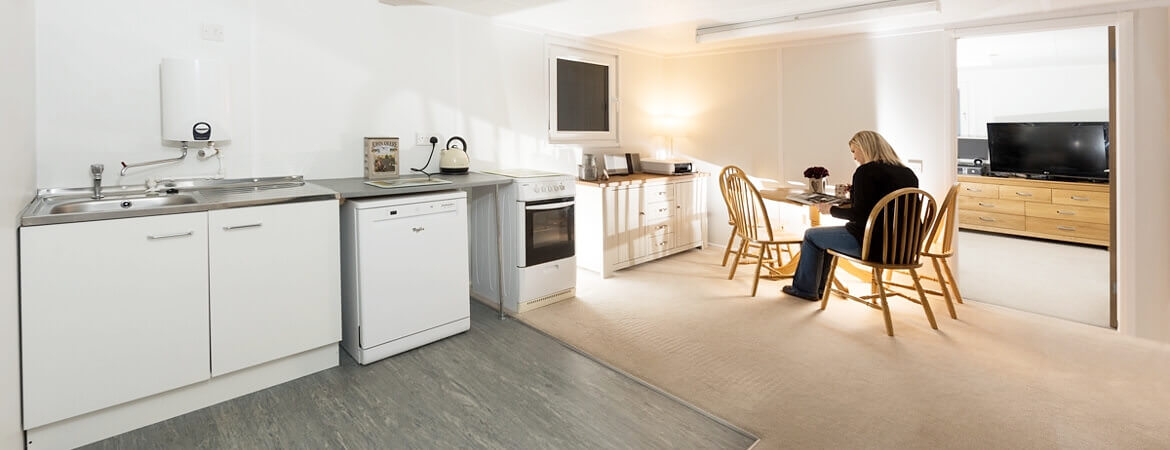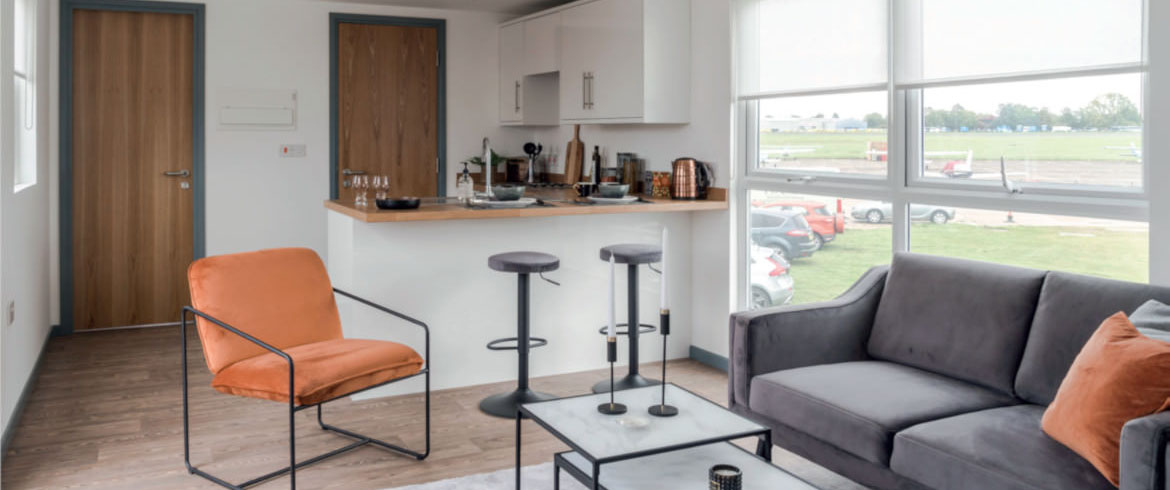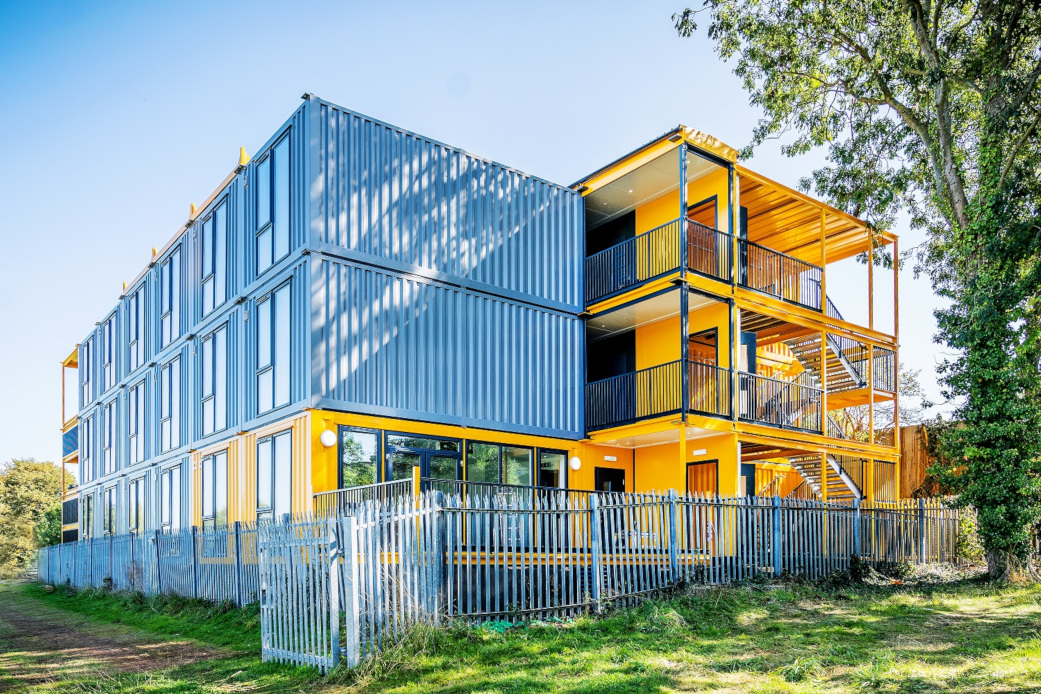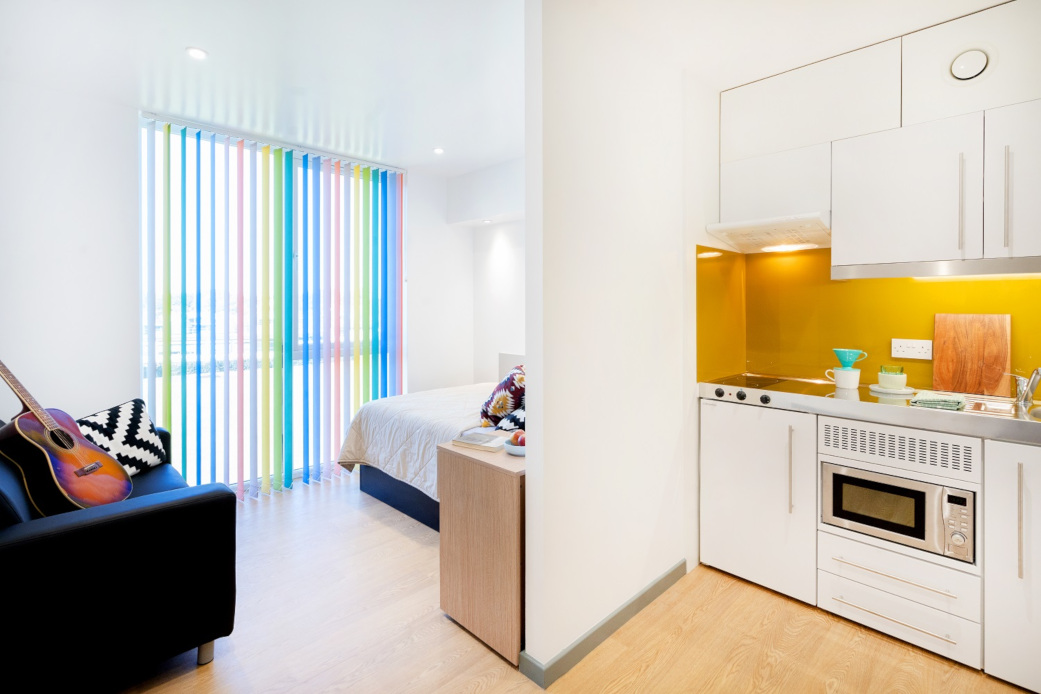Personalising your home
INSULATION
Of all the many features of a MAC container home, insulation is probably the most vital factor in transforming a steel structure into a warm, comfortable home.
Every MAC container home is insulated to maintain ambient internal temperatures and prevent condensation. The thickness and type of insulation depends on whether we are building you a temporary or permanent container house. We use a combination of spray foam insulation and cladding, depending on how the building is to be used.
Spray foam provides the highest level of insulation and creates a seamless barrier against mould or corrosion. It is by far the quickest method of insulation, which helps us to meet our 12-week build time. Recticel insulation provides the highest R rating that building regulations require for permanent dwellings.
Spray foam insulation and cladding both provide a suitable surface for us to line the unit with plasterboard on the walls and ceiling, ready for painting and other wall coverings. The gap between the lining and the insulation provides a cavity to conceal plumbing, electrical wiring and telecoms cabling. See plumbing and electrical installation.
| Standard | Building regulations | |
|---|---|---|
Floor |
Underdrawn and insulated in floor with 80mm cladding |
Underdrawn and insulated in floor with 100mm Recticel insulation, specified to part L1A of Building Regulations |
Walls |
80mm cladding |
35mm cladding and 50mm Recticel insulation |
Ceiling |
30mm spray foam |
50mm spray foam |
Internal partitions |
80mm cladding |
35mm cladding and acoustic insulation to 35Db |
